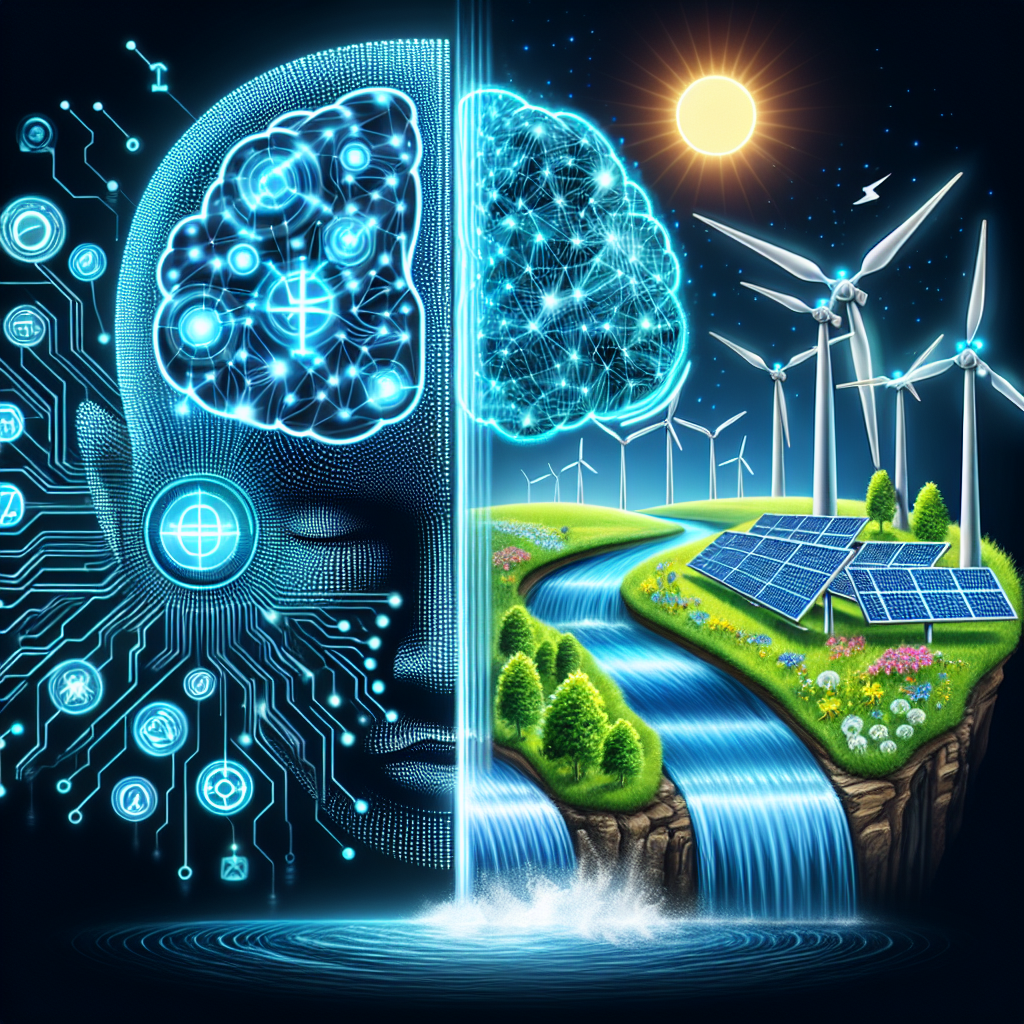The Role of AI in Accelerating the Adoption of Renewable Energy
In recent years, there has been a growing global awareness of the need to transition from traditional fossil fuels to renewable energy sources in order to combat climate change and reduce our dependence on finite resources. Renewable energy sources such as solar, wind, and hydro power have the potential to provide clean, sustainable energy for the future. However, the widespread adoption of these technologies has been hindered by various challenges, including cost, efficiency, and reliability.
Artificial intelligence (AI) has emerged as a powerful tool that can help accelerate the adoption of renewable energy by addressing these challenges and optimizing the integration of renewable energy sources into the existing energy grid. AI technologies such as machine learning, predictive analytics, and optimization algorithms can help improve the efficiency, reliability, and cost-effectiveness of renewable energy systems, making them more attractive and competitive compared to traditional fossil fuel-based energy sources.
One of the key ways AI can accelerate the adoption of renewable energy is by optimizing the design and operation of renewable energy systems. AI algorithms can analyze vast amounts of data to identify the most optimal locations for solar panels, wind turbines, and other renewable energy infrastructure, taking into account factors such as sunlight exposure, wind patterns, and terrain. By optimizing the placement and orientation of renewable energy systems, AI can maximize energy production and minimize costs, making renewable energy more competitive with traditional energy sources.
AI can also improve the efficiency and reliability of renewable energy systems by predicting and optimizing energy production and consumption. For example, AI algorithms can analyze weather data to predict solar and wind energy production, allowing energy grid operators to better anticipate fluctuations in energy supply and demand. By optimizing energy production and consumption in real-time, AI can help reduce energy wastage and ensure a stable and reliable energy supply from renewable sources.
Furthermore, AI can help improve the integration of renewable energy into the existing energy grid by optimizing energy storage and distribution. Energy storage technologies such as batteries and pumped hydro storage are essential for balancing the intermittent nature of renewable energy sources such as solar and wind power. AI algorithms can optimize the operation of energy storage systems by predicting energy demand, optimizing charging and discharging schedules, and minimizing energy losses. By improving the efficiency of energy storage and distribution, AI can help ensure a reliable and stable energy supply from renewable sources.
In addition to optimizing the design, operation, and integration of renewable energy systems, AI can also help reduce the costs associated with renewable energy projects. By analyzing data and identifying patterns, AI algorithms can identify cost-saving opportunities, optimize the use of resources, and reduce maintenance and operational costs. AI can also help streamline the permitting and regulatory processes for renewable energy projects, reducing delays and uncertainties that can increase project costs.
Overall, AI has the potential to revolutionize the renewable energy industry by making renewable energy systems more efficient, reliable, and cost-effective. By leveraging AI technologies, renewable energy developers, energy grid operators, and policymakers can accelerate the adoption of renewable energy and transition towards a more sustainable and resilient energy system.
FAQs:
Q: How can AI improve the efficiency of renewable energy systems?
A: AI can improve the efficiency of renewable energy systems by optimizing the design and operation of renewable energy infrastructure, predicting and optimizing energy production and consumption, and optimizing energy storage and distribution.
Q: Can AI help reduce the costs associated with renewable energy projects?
A: Yes, AI can help reduce the costs associated with renewable energy projects by identifying cost-saving opportunities, optimizing resource use, reducing maintenance and operational costs, and streamlining permitting and regulatory processes.
Q: How can AI help integrate renewable energy into the existing energy grid?
A: AI can help integrate renewable energy into the existing energy grid by optimizing energy storage and distribution, predicting energy demand, and balancing energy supply and demand in real-time.
Q: What are some examples of AI applications in the renewable energy industry?
A: Some examples of AI applications in the renewable energy industry include predicting solar and wind energy production, optimizing energy storage systems, analyzing data to identify cost-saving opportunities, and streamlining permitting and regulatory processes for renewable energy projects.

